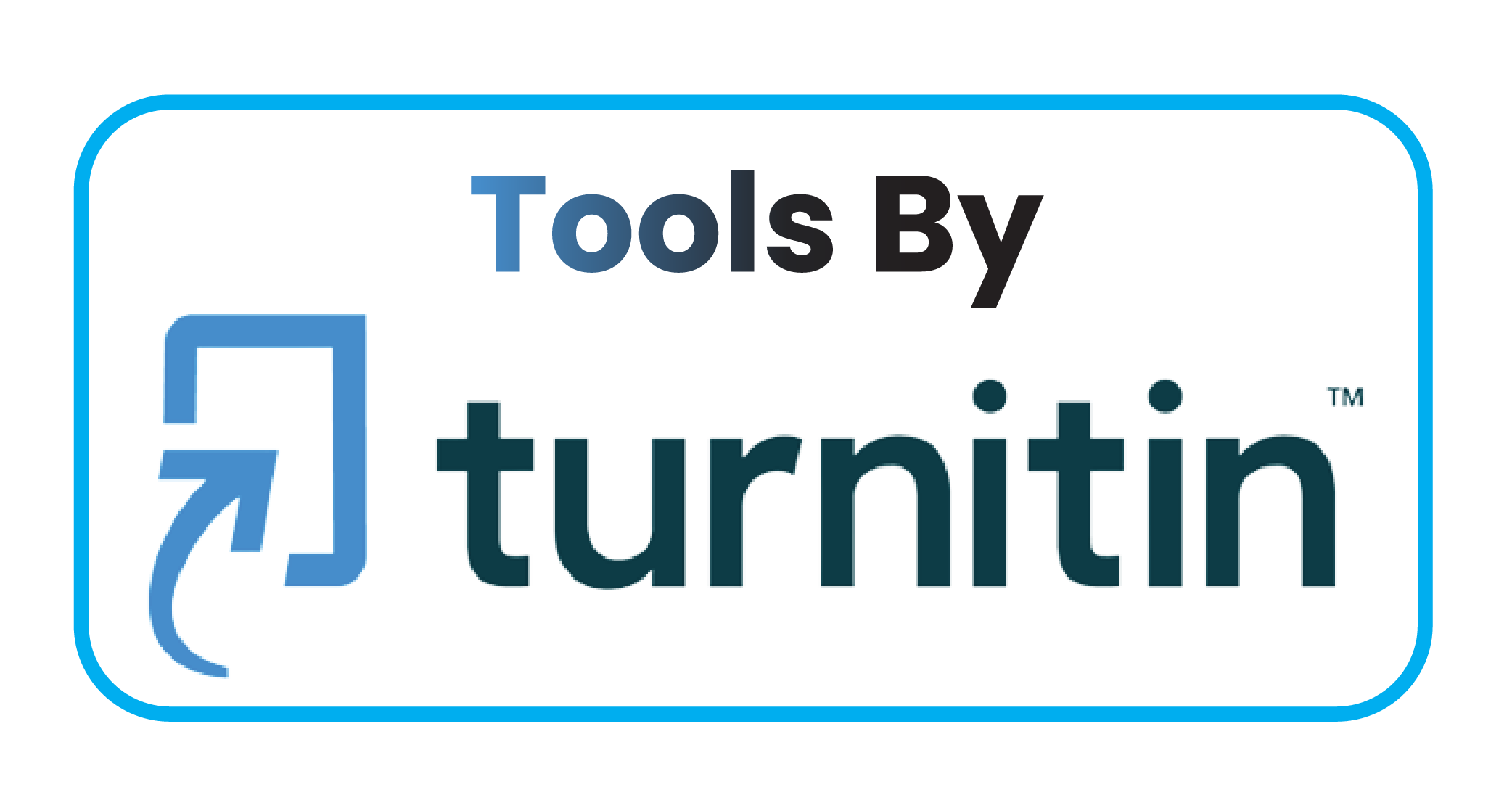Research and Development (R&D) Interactive Media That is Effective, Efficient and Fun for Students
DOI:
https://doi.org/10.59888/ajosh.v2i6.250Keywords:
development educatiaon;, interactive media;, teaching materials;, effectiveness;, motivationAbstract
This development innovation is an effort to overcome the limitations of Islamic religious education teaching materials in schools and increase students' enthusiasm for learning by using interactive media with the help of Android forms. The approach taken in the research and development of teaching media is qualitative and quantitative. This development uses the ADDIE model (analyse, Design, Development, Implementation, and Evaluation), which consists of stages: (1) analysis, (2) design, (3) development, (4) implementation, and (5) evaluation as procedures and guidelines for developing teaching materials data collection techniques by distributing surveys to test subjects and a series of formative assessments. Analysis techniques use qualitative and statistics. The results of the analysis of the development of teaching materials are in the form of software products or applications in the form of Android. Based on the validation and test results of design experts, 86% said that this product is valid and efficient; the validation results of media experts, 87% of these products are valid and efficient, and the results of material expert validation say 80% of these products are valid and efficient
References
Badri, Y., Nindiasari, H., & Fatah, A. (2019). Pengembangan bahan ajar interaktif dengan scaffolding metakognitif untuk kemampuan dan disposisi berpikir reflektif matematis siswa. Jurnal Penelitian Dan Pembelajaran Matematika, 12(1), 156–172. https://doi.org/10.30870/jppm.v12i1.4863
Cavanagh, M., Barr, J., Moloney, R., Lane, R., Hay, I., & Chu, H.-E. (2019). Pre-service teachers’ impact on student learning: Planning, teaching, and assessing during professional practice. Australian Journal of Teacher Education (Online), 44(2), 66–81.
Daryanes, F., Darmadi, D., Fikri, K., Sayuti, I., Rusandi, M. A., & Situmorang, D. D. B. (2023). The development of articulate storyline interactive learning media based on case methods to train students’ problem-solving ability. Heliyon, 9(4).
Kawasaki, R., Cheung, N., Wang, J. J., Klein, R., Klein, B. E. K., Cotch, M. F., Sharrett, A. R., Shea, S., Islam, F. M. A., & Wong, T. Y. (2009). Retinal vessel diameters and risk of hypertension: the Multiethnic Study of Atherosclerosis. Journal of Hypertension, 27(12), 2386–2393.
Khozin, K., Haris, A., & Rozza, D. S. (2023). Implementing Articulate Storyline to Improve Students’ Interest in Learning Islamic History Lesson. Jurnal Tarbiyatuna, 14(1), 51–62.
Kimbrough, W. M., & Hutcheson, P. A. (1998). The impact of membership in Black Greek-letter organisations on Black students’ involvement in collegiate activities and their development of leadership skills. Journal of Negro Education, 96–105.
Mayer, S., Abou Refaie, R., & Uebernickel, F. (2024). The challenges and opportunities of hybrid education with location asynchrony: Implications for education policy. Policy Futures in Education, 14782103231224508.
Mayer, S., & Schwemmle, M. (2023). Teaching university students through technology-mediated experiential learning: Educators’ perspectives and roles. Computers & Education, 207, 104923. https://doi.org/10.1016/j.compedu.2023.104923
Nadiyah, R. S., & Faaizah, S. (2015). The development of online project-based collaborative learning using the ADDIE model. Procedia-Social and Behavioral Sciences, 195, 1803–1812. https://doi.org/10.1016/j.sbspro.2015.06.392
Pozdeeva, S., & Obskov, A. (2015). Justification of the main pedagogical conditions of interactive teaching a foreign language in high school. Procedia-Social and Behavioral Sciences, 206, 166–172. https://doi.org/10.1016/j.sbspro.2015.10.047
Sabil, H., Asrial, A., Syahrial, S., Robiansah, M. A., Zulkhi, M. D., Damayanti, L., Kiska, N., Silvia, N., & Ubaidillah, U. (2021). Online Geoboard Media Improves Understanding of Two-dimensional Flat Shape Concepts in Elementary School Students. International Journal of Elementary Education, 5(4), 685–691.
Septiana, N., Ikhwan, A., & Anwar, W. S. (2023). Student Management in Tahfidz Extracurriculars. EDUKASI: Jurnal Pendidikan Islam (e-Journal), 11(1), 11–22.
Setyosari, H. P. (2016). Metode penelitian pendidikan & pengembangan. Prenada Media.
Suprapto, N., Prahani, B. K., & Cheng, T. H. (2021). Indonesian curriculum reform in policy and local wisdom: Perspectives from science education. Jurnal Pendidikan IPA Indonesia, 10(1), 69–80. https://doi.org/10.15294/jpii.v10i1.28438
Supriadi, O., Musthan, Z., Sa’odah, R. N., Haryanti, Y. D., Marwal, M. R., Purwanto, A., Mufid, A., Yulianto, R. A., Farhan, M., & Fitri, A. A. (2020). Did transformational and transactional leadership style and organisational learning influence the innovation capabilities of school teachers during the COVID-19 pandemic? Systematic Reviews in Pharmacy, 11(9), 299–311.
Tampubolon, S., Susanty, L., Khasanah, K., Wisman, W., & Riyanto, A. (2021). Understanding why teachers entrust technology to innovate learning outcomes. Jurnal Konseling Dan Pendidikan, 9(4), 372–379. https://doi.org/10.29210/169000
Toni, M., Tobroni, T., Faridi, F., & Nurhakim, N. (2024). Development of Interactive Teaching Materials Based on Articulate Storyline Software. Al-Hayat: Journal of Islamic Education, 8(1), 147–161.
Veselinovska, S. S., Zivanovik, J., Petrovska, S., & Gokik, M. (2010). Interactive learning in programmed teaching of the subject “Based of nature science” at pedagogical faculties in the Republic of Macedonia (ICT tools in Biology education). Procedia-Social and Behavioral Sciences, 2(2), 2253–2259.
Wilis, R., Prayitno, B. A., Sunarno, W., & Anjirawaroj, S. (2023). Improving students’ metacognitive abilities and creative thinking skills through STEM-based online learning. JPBI (Jurnal Pendidikan Biologi Indonesia), 9(1), 90–102. https://doi.org/10.22219/jpbi.v9i1.22994
Zaim, M. (2020). Media Pembelajaran Agama Islam Di Era Milenial 4.0. POTENSIA: Jurnal Kependidikan Islam, 6(1), 1–17.
Published
Issue
Section
License
Copyright (c) 2024 Marwan Toni, Mahmudin Sudin

This work is licensed under a Creative Commons Attribution-ShareAlike 4.0 International License.
Authors who publish with this journal agree to the following terms:
- Authors retain copyright and grant the journal right of first publication with the work simultaneously licensed under a Creative Commons Attribution-ShareAlike 4.0 International. that allows others to share the work with an acknowledgement of the work's authorship and initial publication in this journal.
- Authors are able to enter into separate, additional contractual arrangements for the non-exclusive distribution of the journal's published version of the work (e.g., post it to an institutional repository or publish it in a book), with an acknowledgement of its initial publication in this journal.
- Authors are permitted and encouraged to post their work online (e.g., in institutional repositories or on their website) prior to and during the submission process, as it can lead to productive exchanges, as well as earlier and greater citation of published work.










